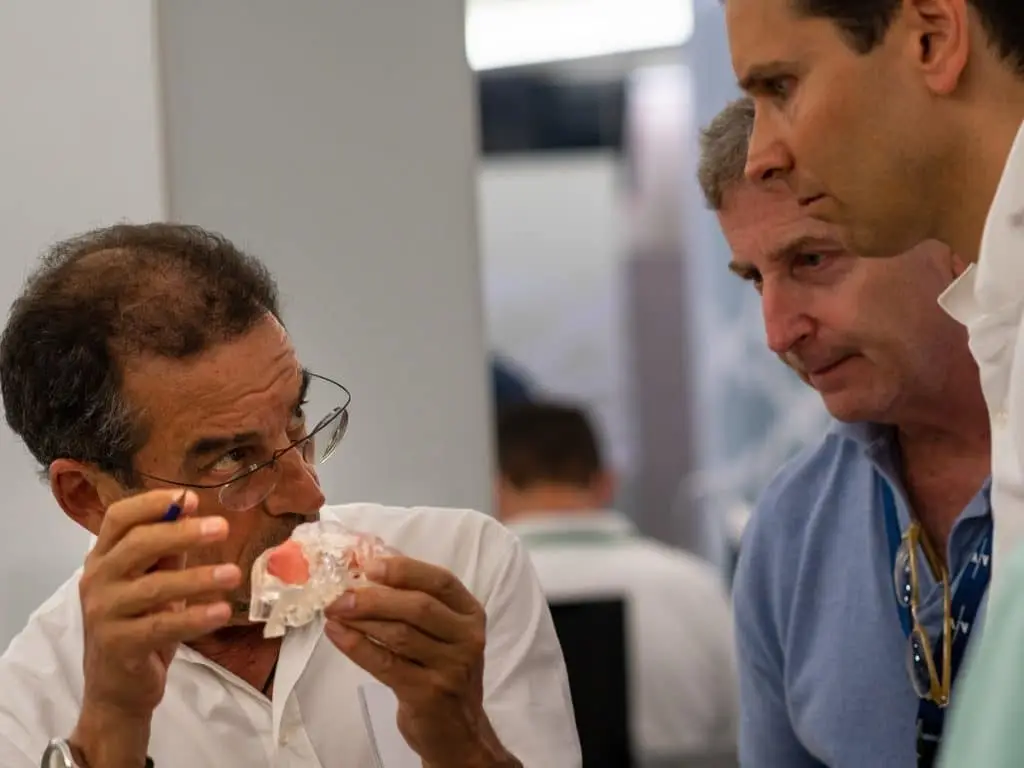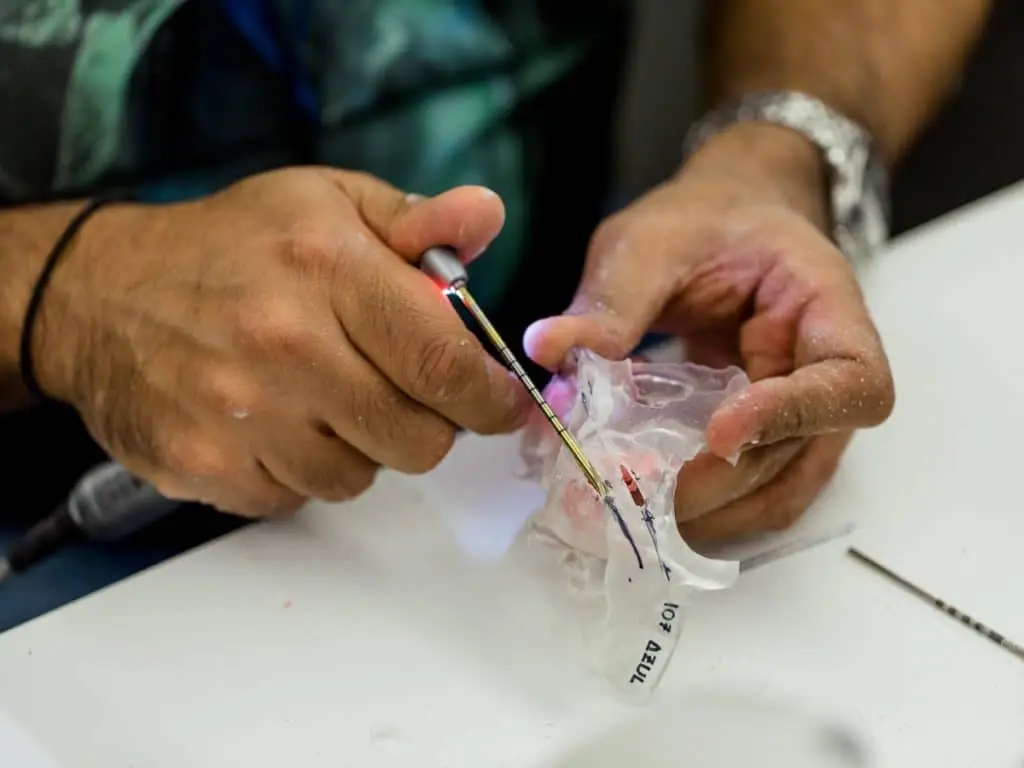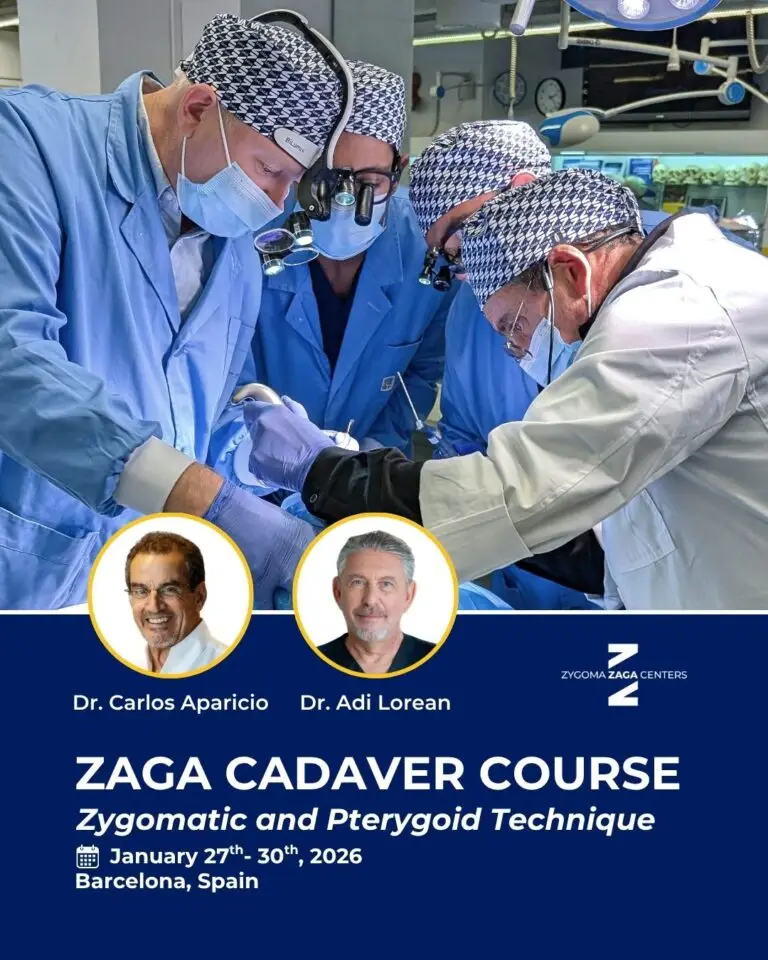
Aparicio, C., Manresa, C., Francisco, K., Ouazzani, W., Claros, P., Potau, J. M., & Aparicio, A. (2014). The long-term use of zygomatic implants: a 10-year clinical and radiographic report. Clinical Implant Dentistry and Related Research, 16(3), 447–459.
The atrophic maxilla is a common condition in older people, but unfortunately, any dentist dealing with dental rehabilitation using implant-supported means can find it a real challenge. So much so in fact, that the placement of regular implants can often result in biomechanically compromised situations, due to the combination of both soft bone and high loading in the posterior areas.
Over several decades, numerous techniques for bone augmentation have been developed and documented with the common goal of enabling safe and secure placement and sturdy integration of dental implants in the upper posterior area. These include techniques such as sinus floor augmentation and onlay bone grafting. While these procedures can and do work to strengthen the implant site, they also create the issue of patients having to go through prolonged or extended treatment phases.

As a result, this has led others to pursue alternatives to bone grafting in order to achieve osseointegrated anchorage using any remaining/existing bone. These include anchoring into sites such as the maxillary tuberosity, the pterygoid plates, and the zygomatic bone, all of which may remove the need for bone grafting and in turn, give the patient a less invasive treatment overall.
Zygomatic implants and their uses
In fact, the use of longer zygomatic implants for angulated placement in the zygomatic bone has been around since their invention by Brånemark back in 1997, but initially, they were only used for severely problematic cases. To show their effectiveness, Brånemark and his colleagues conducted a mixed study involving some 77 patients who had all undergone a full or partial removal of the upper jaw. The study involved 156 dental implants, all of which utilized non-standardized longer lengths (24 of which were zygomatic implants). The mean success rates of the zygomatic implants were deemed to be 96.8%, although no confirmed data for the overall prosthetic outcome was reported. Since then, other clinicians have reported good to excellent results with regards to zygomatic implants and their ability to support a fixed prosthesis.

Surprisingly, despite the fact that by 2007 the zygomatic implant had been in use for 10 years, both to aid dentition in those with severely problematic cases and to provide a stable implant base in those with more standardized atrophic edentulous maxillae; there are insufficient long-term studies to show their effectiveness. For this reason, a ten-year follow-up was conducted on a selected number of patients, all of whom had severely atrophic edentulous maxillae and who had previously undergone zygomatic implantation.
96,8% success rate of zygomatic implants
Patient profile
A total of 22 patients had 22 fixed implant bridges anchored with 41 zygomatic implants and 131 standard implants. 8 patients were male and the remaining 14 were female, aged between 48 and 60 years. While 17 of the patients were non-smokers, the remaining 5 were smokers. 2 patients smoked 11-20 cigarettes per day while the remaining 3 patients smoked in excess of 20. Before the follow-up’s commenced, patients were invited to answer 2 questionnaires detailing sinus and implant health and the degree of satisfaction regarding their intraoral surgery. All were deemed fit and healthy.
The implant placement
Between 1998 and 2002, all 172 implants were placed by a single dental surgeon. All were machined-surface titanium implants manufactured by Nobel Biocare. The 131 regular implants were sized between 7mm and 18mm and the remaining 41 zygomatic implants ranged from 30-50mm in length. In total 55 regular implants were anchored in the canine areas, 29 other regular implants were split between the Pterygoid and the Pyramidal processes, and the remaining 41 zygomatic implants were anchored into the zygomatic (cheek) bone.
Following on…
In all cases, a 2-stage procedure with 5-6 month healing was adopted. Monthly follow-ups were conducted up until the 6-month point where biannual follow-ups were then undertaken. Upon every visit, a soft tissue examination was performed and implant stability was measured using a standard periotest device. In addition, CBCT scans were regularly conducted on all 22 patients right up until 10 years post-loading.
Each CBCT scan was then scored and ranked using the Lund-Mackay staging system (normally used to record cases of chronic rhino-sinusitis). In addition, the patient’s ability to chew was also evaluated by means of the Oral Health Impact Profile for Edentulous Patients (OHIP EDENT).
The Results…
Periotest device
Mean values of Zygomatic implants using the Periotest device showed increased stability in all cases, both before and after 10 years of placement.
L-M findings
The Lund-Mackay scores stated that 12 patients (around 54.5%) showed no sinus issues. 8 patients had obstructions in one side, while the remaining 2 patients experienced mild to moderate bilateral obstruction.
OHIP-EDENT
The Oral Health Impact Profile results reported that 84% of patients were satisfied with the treatment. Out of these, 34.4% reported scores of 100% satisfaction in all areas.
Conclusion
This approach has shown much improved clinical results

This is the first study of its kind to ascertain the effectiveness of zygomatic implantation over a long-term (ten years) period. Yet positive results have shown that it can be a calculated procedure with a predictable outcome for patients suffering from the severely atrophic maxilla. However, let’s not forget that all zygomatic implant procedures in this clinical study were carried out using standardized intra-sinus techniques. This is reflected in the small percentage of people who reported mild to moderate unilateral and bilateral obstructions of the sinus area.
More recently, however, this study has been used as grounds for a newer anatomy-guided approach. This approach is one that promotes the placement of the zygomatic implant based on the anatomy of the patient – E.G. the whereabouts of the patient’s basal/alveolar process and the curvature of the anterior maxillary wall. In a number of cases so far, this approach has shown much improved clinical results and in the future, may even be seen as the new ‘gold’ standard for placing implants into those patients with the atrophic maxilla.


Thank you for sharing this informative blog.
You really told us very detailed things about zygomatic implants. I had also recently done my implants surgery from LBR Dental Implants and so far all is good i am not facing any issue and lets see how things will go. They also provides the best Zygomatic implants in India.